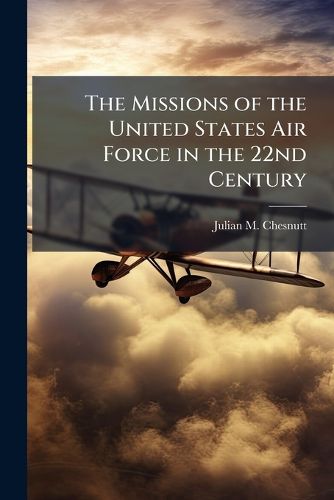Readings Newsletter
Become a Readings Member to make your shopping experience even easier.
Sign in or sign up for free!
You’re not far away from qualifying for FREE standard shipping within Australia
You’ve qualified for FREE standard shipping within Australia
The cart is loading…






One hundred years ago, the Aeronautical Division of the US Army Signal Corps consisted of three Airmen, one dirigible, one airplane, and performed only one mission. Today, the USAF consists of over 300,000 Airman, 3000 aircraft and performs 17 distinct missions. The USAF in the 22nd century will quite possibly be as radically different as the Aeronautical Division is from the Air Force of today. Using the modern techniques such as a Delphi Poll, State of Future Index, Scenarios and Trend Impact Analysis, it will possible to identify trends that will shape the missions of the USAF 100 years from now. In this paper examines the USAF in three different future scenarios in the 22nd century. The worst case scenario is a heavily resource-constrained future where nation-state and non-nation-state conflict is commonplace. The best case scenario is a technologically advanced future in which nation-state conflict is relatively rare and most societal ills have been addressed. The most likely case is a technologically advanced future which retains significant societal ills and nation-state and non-nation state conflict remains a significant threat. The conclusions of this paper are intended to provoke thoughts and ideas about the long-term health and direction of the USAF.
This work has been selected by scholars as being culturally important, and is part of the knowledge base of civilization as we know it. This work was reproduced from the original artifact, and remains as true to the original work as possible. Therefore, you will see the original copyright references, library stamps (as most of these works have been housed in our most important libraries around the world), and other notations in the work.
This work is in the public domain in the United States of America, and possibly other nations. Within the United States, you may freely copy and distribute this work, as no entity (individual or corporate) has a copyright on the body of the work.
As a reproduction of a historical artifact, this work may contain missing or blurred pages, poor pictures, errant marks, etc. Scholars believe, and we concur, that this work is important enough to be preserved, reproduced, and made generally available to the public. We appreciate your support of the preservation process, and thank you for being an important part of keeping this knowledge alive and relevant.
$9.00 standard shipping within Australia
FREE standard shipping within Australia for orders over $100.00
Express & International shipping calculated at checkout
One hundred years ago, the Aeronautical Division of the US Army Signal Corps consisted of three Airmen, one dirigible, one airplane, and performed only one mission. Today, the USAF consists of over 300,000 Airman, 3000 aircraft and performs 17 distinct missions. The USAF in the 22nd century will quite possibly be as radically different as the Aeronautical Division is from the Air Force of today. Using the modern techniques such as a Delphi Poll, State of Future Index, Scenarios and Trend Impact Analysis, it will possible to identify trends that will shape the missions of the USAF 100 years from now. In this paper examines the USAF in three different future scenarios in the 22nd century. The worst case scenario is a heavily resource-constrained future where nation-state and non-nation-state conflict is commonplace. The best case scenario is a technologically advanced future in which nation-state conflict is relatively rare and most societal ills have been addressed. The most likely case is a technologically advanced future which retains significant societal ills and nation-state and non-nation state conflict remains a significant threat. The conclusions of this paper are intended to provoke thoughts and ideas about the long-term health and direction of the USAF.
This work has been selected by scholars as being culturally important, and is part of the knowledge base of civilization as we know it. This work was reproduced from the original artifact, and remains as true to the original work as possible. Therefore, you will see the original copyright references, library stamps (as most of these works have been housed in our most important libraries around the world), and other notations in the work.
This work is in the public domain in the United States of America, and possibly other nations. Within the United States, you may freely copy and distribute this work, as no entity (individual or corporate) has a copyright on the body of the work.
As a reproduction of a historical artifact, this work may contain missing or blurred pages, poor pictures, errant marks, etc. Scholars believe, and we concur, that this work is important enough to be preserved, reproduced, and made generally available to the public. We appreciate your support of the preservation process, and thank you for being an important part of keeping this knowledge alive and relevant.